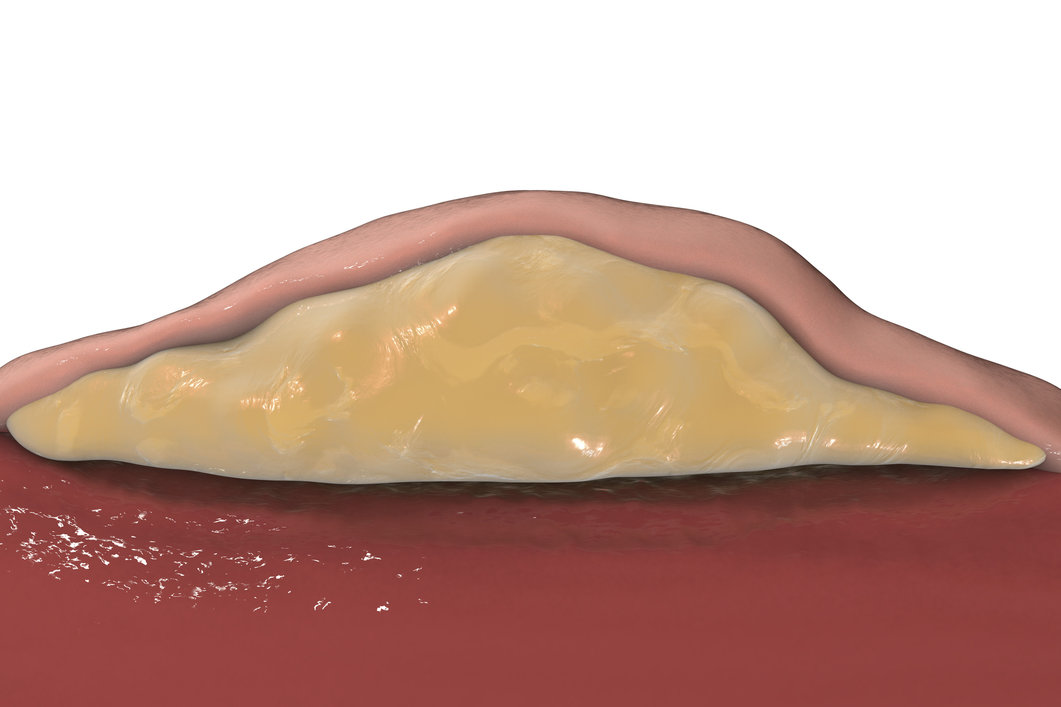A pilonidal sinus is a small lump in the skin that usually develops in the area at the top of your bottom, just below your tailbone. In most cases, it doesn’t cause symptoms, and treatment is usually required if a cyst develops and becomes infected.
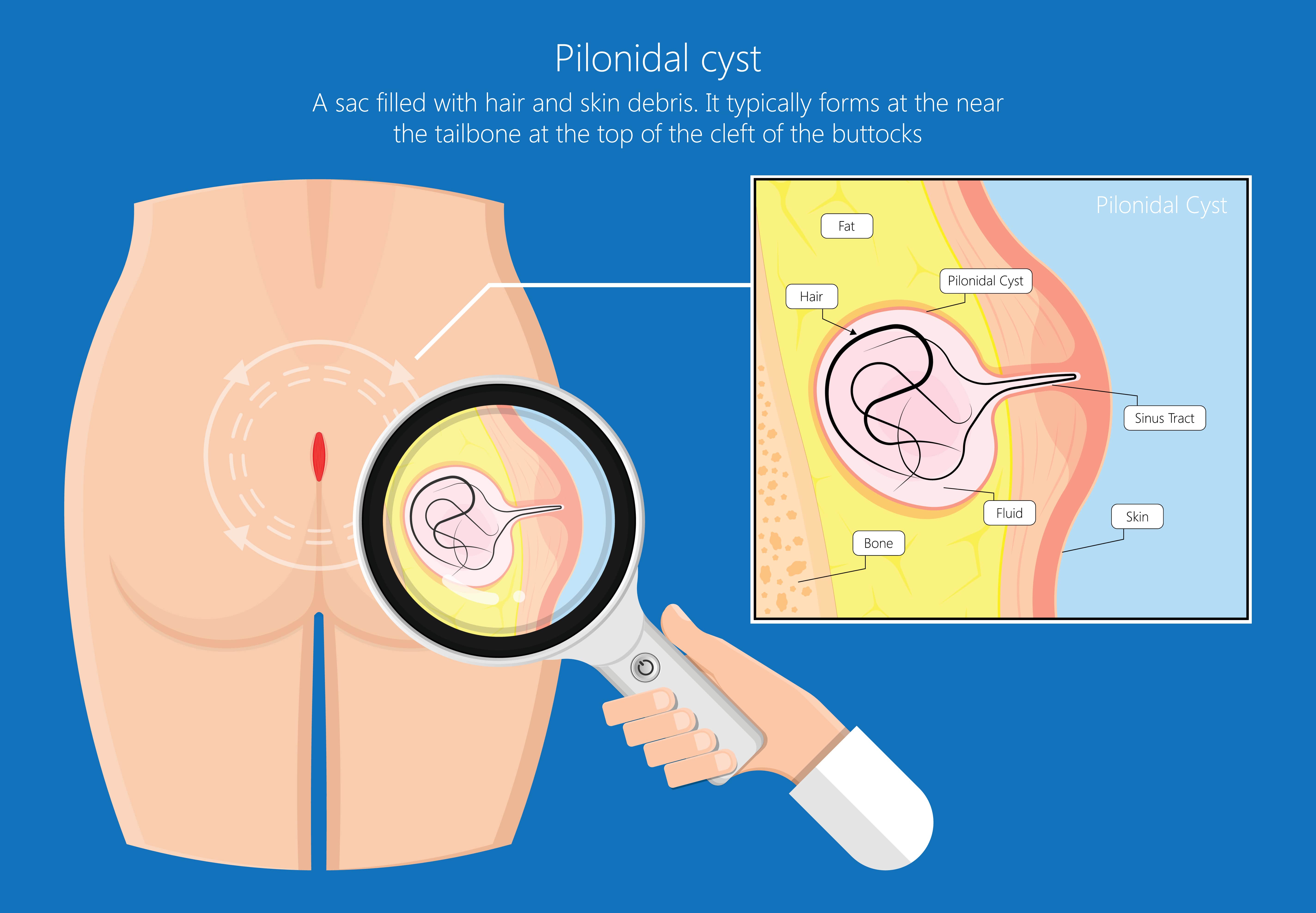
Pilonidal sinus symptoms
In most cases, a pilonidal sinus won’t cause any symptoms, so it doesn’t require treatment. However, treatment is required if a cyst develops and becomes infected.
Pilonidal sinus cysts
If hair becomes trapped in a pilonidal sinus, it can lead to a pilonidal cyst. This is a small, painless lump at the top of the cleft of your buttocks, which you might notice when washing yourself.
Pilonidal sinus and abscess
If a pilonidal cyst develops and then becomes infected, an abscess will develop.
If you have a pilonidal abscess, the swelling at the top of your buttocks will likely be painful and pus-filled. This can sometimes develop quickly, making it painful to sit down. You may also notice that the abscess starts to regularly ooze blood or pus.
What causes a pilonidal sinus?
It’s not clear what causes a pilonidal sinus, but it often forms when hairs curl over and grow into your skin. This could be due to factors like a skin problem, pressure or friction that causes the hair between the buttocks to be pushed inwards.
Pilonidal sinuses are most common in young adults and teenagers and are rare in children and people over 40. They are also more common in men because males tend to have more hair in the buttock area.
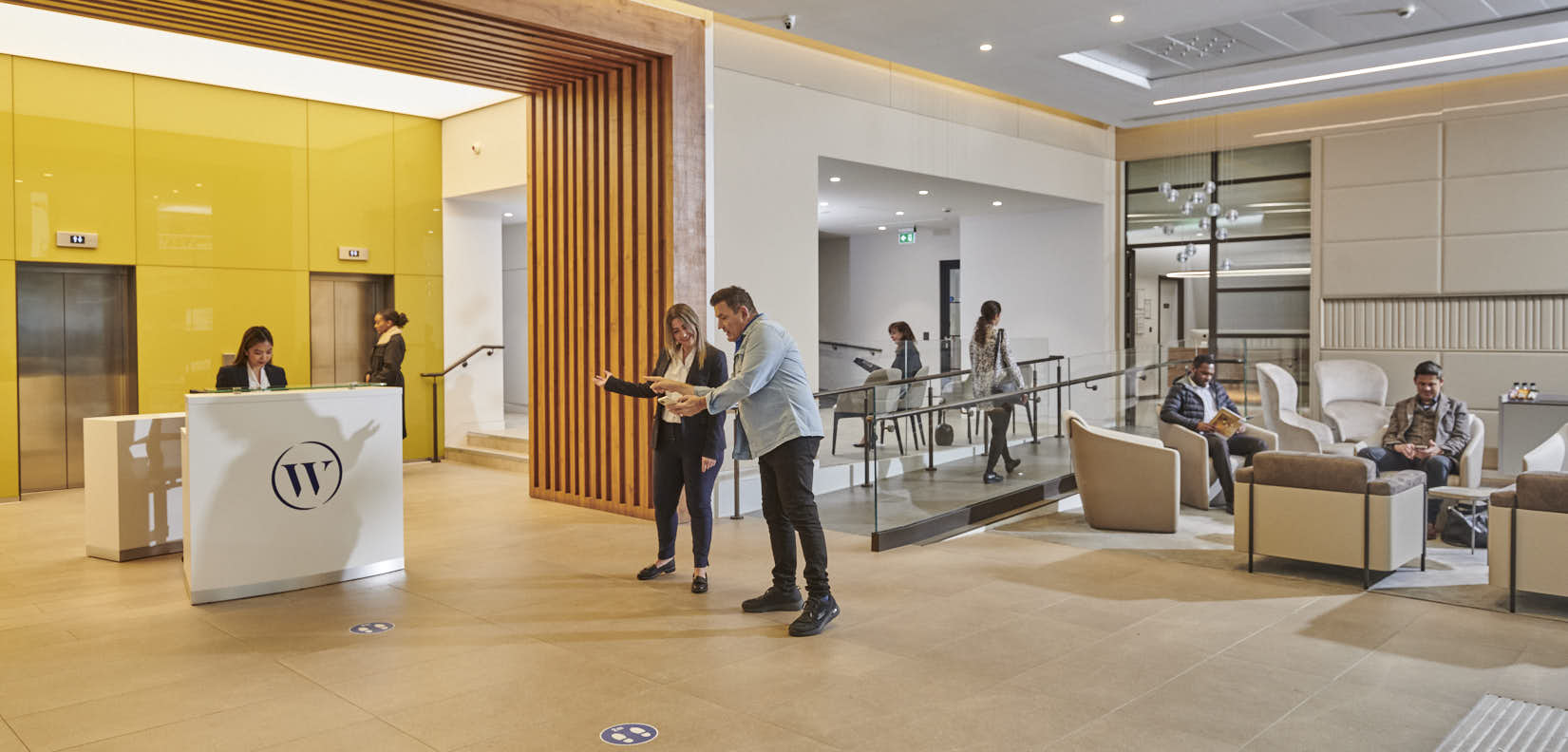
How is a pilonidal sinus diagnosed?
A pilonidal sinus can usually be diagnosed through a physical examination and medical history. Your specialist will assess your skin and any symptoms pain, redness, swelling, or drainage. In some cases, imaging tests like a
CT scan or
MRI may be required to confirm the diagnosis, especially in complex cases or to rule out other conditions.
Can a pilonidal sinus be prevented?
A pilonidal sinus cannot always be prevented, and it can also return after treatment.
There are, however, some things you can do to lower your risk, such as:
- having a good and regular hygiene routine, and keeping your buttocks clean and dry
- losing any excess weight
- avoiding sitting for long periods of time to reduce pressure on the area
- regularly removing the hair around your buttocks
Complications of a pilonidal sinus
If left untreated, pilonidal sinus may cause:
recurrent infections - repeated abscesses or sinus formation
chronic drainage - persistent discharge from the sinus opening
scarring - repeated surgery or infections may cause scarring
rarely, skin cancer - long-standing, untreated cases may increase your risk of squamous cell carcinoma
Pilonidal sinus treatment options
If there are no signs of infection, a "watch and wait" approach will be recommended to monitor a pilonidal sinus. In some cases, however, it’s recommended to remove any hair from the area to prevent it from curling over and growing into the skin to reduce the risk of a cyst forming.
If there is an infection, antibiotics are usually prescribed and painkillers can also be taken to reduce any discomfort. If your symptoms are very bad, if the abscess is large or if the infection keeps coming back, your consultant may recommend surgery.
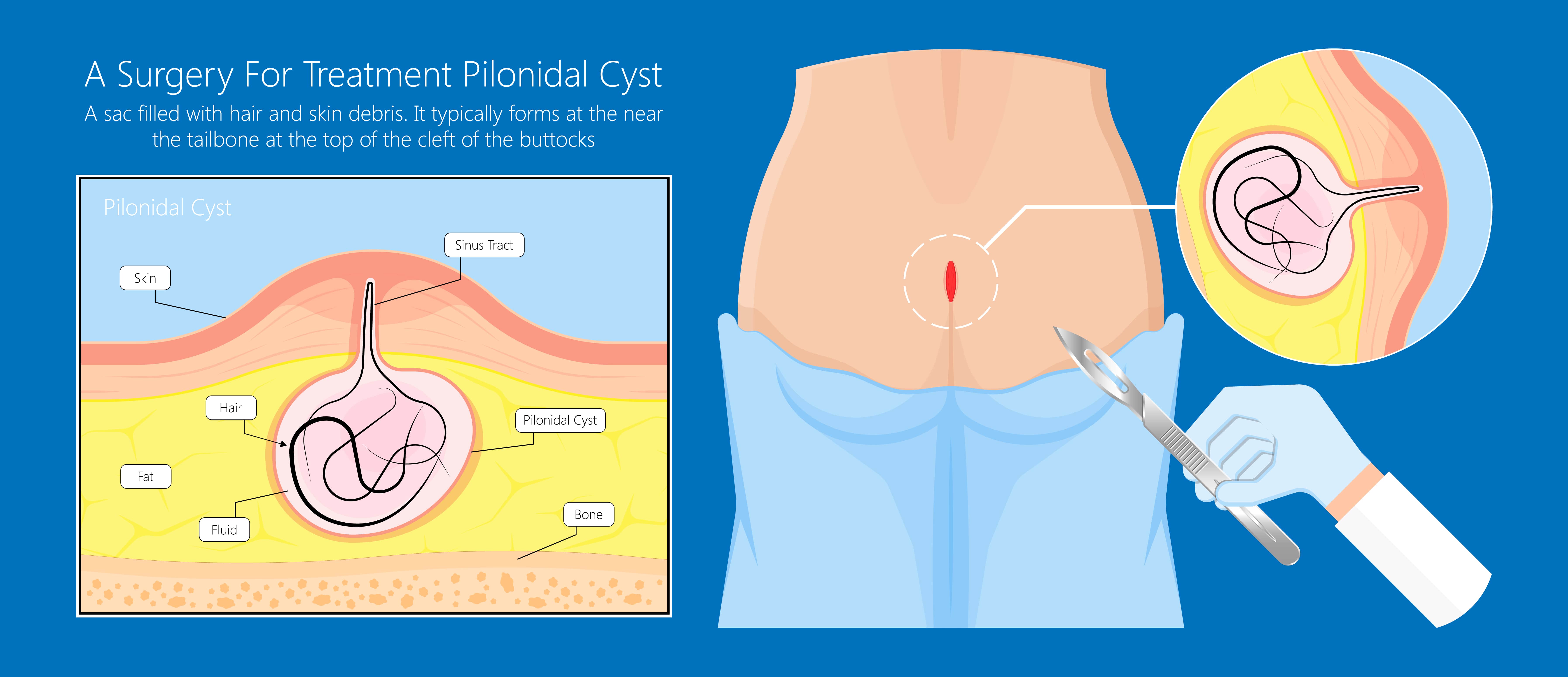
Pilonidal sinus surgery
The surgical treatment options for pilonidal sinus are:
incision and drainage - a small cut is made in the abscess and any fluid is drained. This can be done under a local or general anaesthetic, depending on the size of the abscess. This is usually required only if an abscess has developed.
wide excision and open healing - the sinus is cut out, some surrounding skin is also removed and the wound is left open to heal naturally. This can be done under a local or general anaesthetic and this type of surgery has the lowest risk of pilonidal sinus recurrence
excision and Limberg flap reconstruction - the sinus and some surrounding tissue are removed and healthy skin is taken from another area of the bottom to cover the wound
EPSiT (endoscopic pilonidal sinus treatment) - a thin camera (an endoscope) is used to look inside the pilonidal sinus. Small instruments are then inserted through the endoscope to treat and clean the area. Heat is often used to close the wound and support healing. Sometimes this procedure is combined with laser treatment to achieve better results.

Pilonidal sinus surgery recovery time
At Welbeck, all pilonidal sinus surgeries are performed on a day surgery basis, so you can return home as soon as the anaesthetic has worn off.
If your surgery requires stitches, they will be removed at a consultation around 10 days after your procedure. Complete healing takes around one month but can be quicker.
Treatment of pilonidal sinus without surgery
When surgery is not necessary, antibiotics may be prescribed and may be effective in treating the sinus.
At Welbeck, our consultants always aim to use minimally invasive approaches as the first line of treatment, to prevent the need for surgery as much as possible.
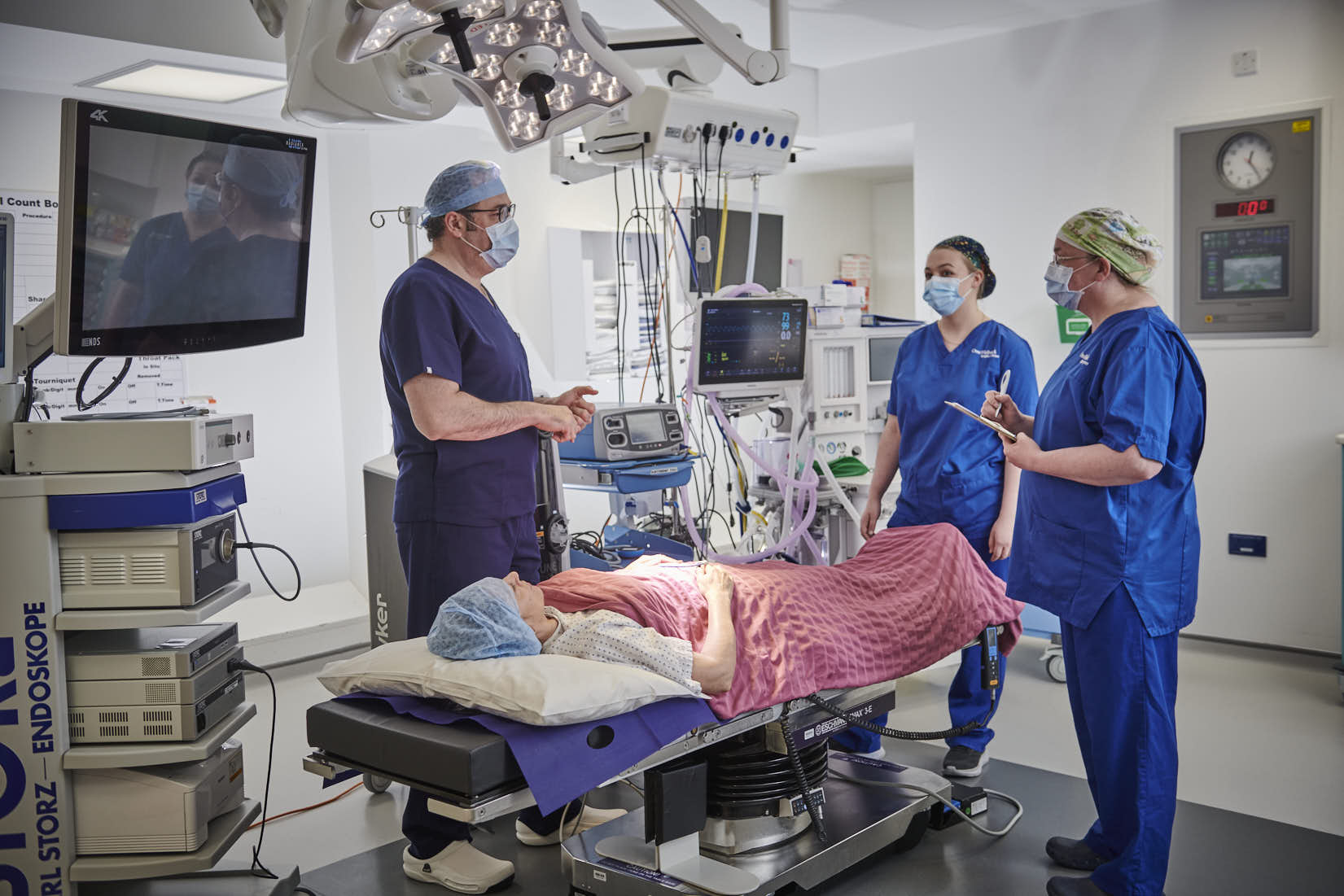
Why choose Welbeck?
At Welbeck, our team of leading consultants offer world-class expertise and care in the diagnosis and treatment of pilonidal sinuses, cysts and abscesses.
With a focus on minimally invasive techniques, our specialists deliver patient-centred care within our state-of-the-art facilities to provide you with the best possible outcome.
Book your private consultation
Your health is important to us, so we strive to offer same-day appointments whenever possible.
Our consultants are recognised by the major health insurance companies. If you have private health insurance, your treatment at Welbeck can begin once you have obtained authorisation. We also provide care to self-paying patients. Learn more about the different payment options at Welbeck.
